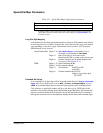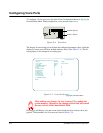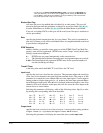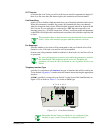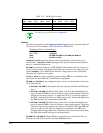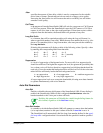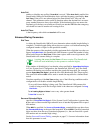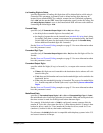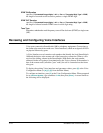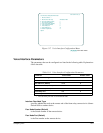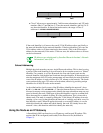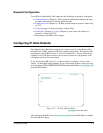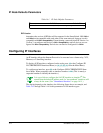
Configuring Voice 13-15
# of Leading Digits to Delete
specifies the number of leading dial digits that will be deleted before a dial string is
forwarded. This parameter is primarily used to delete leading digits that may be
inserted by an attached PBX. For example, assume the user of attached equipment
dials
1234
and the attached PBX inserts the number
9
as a prefix to the dial string. If
#
of Leading Digits to Delete
is set to
1
, the SmartSwitch 1800 will remove the
9
before
forwarding the dialed digits
1234
.
Forward Delay
specifies (only if
Forwarded Output Digits
is
All
or
Ext
) two delays:
●
the delay before extended digits are forwarded, and
●
the length of a pause that can be inserted in an extended dial string that is being
forwarded. Each time a comma is encountered in an extended string, the Smart-
Switch 1800 will pause for the length of time configured for
Forward Delay
before additional extended digits are forwarded.
See the Store and Forward Dialing examples on page C-1 for more information about
how this parameter is used.
Forwarded Digit Type
specifies (only if
Forwarded Output Digits
is
All
or
Ext
) how the dial digits will be for-
warded.
See the Store and Forward Dialing examples on page C-1 for more information about
how this parameter is used.
Forwarded Output Digits
specifies which dial digits (if any) to forward (i.e., to output at the remote voice/fax
card).
●
If
None
, dial digits are not forwarded to the destination device when a call is ini-
tiated on this port.
●
If
All
, the speed-dial number and associated extended digits are forwarded to the
destination device.
●
If
Ext
, only the extended digit string is forwarded. The source of extended digits
(i.e., from the map table or dialed by the user) is specified by
Source of Extended
Digits.
See the Store and Forward Dialing examples on page C-1 for more information about
how this parameter is used.
Make/Break Ratio
specifies (if
Forwarded Output Digits
is
All
or
Ext
and
Forwarded Digit Type
is
Pulse
)
the make/break ratio of each digit pulse that is forwarded. Make and break periods are
the times contact is made for each digit and broken between digits.
For example, if the default ratio of
34/66
is configured, assume someone dials the
number
3
. To do this, s/he rotates the dial to 3, then releases the dial. Contact is then
broken for 66 ms, made for 33 ms (number
2
), broken for 66 ms, made for 33 ms
(number
1
), broken for 66 ms, then made continuously.
For reference, the
34/66
default ratio is compatible with telephony systems in the U.S.
and several countries in Europe.



